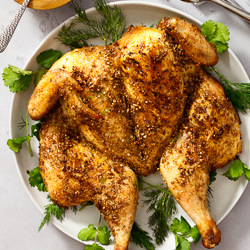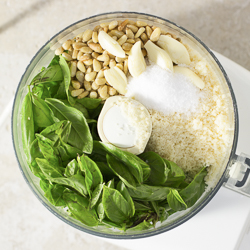I believe that if each of us cooked just a little more, not only would our lives be happier and more satisfying, but it could make the world a better place.
I’m not suggesting you churn your own butter or mill your own flour. I’m just saying that however you currently put food on the table, it might make a difference in your life and others’ if you do a little more and outsource a little less. Whatever that means to you.
One crazy-easy way to do that? Homemade salad dressing.

Salad dressing is basically fat and acid. Two ingredients you already have on hand, probably in many forms. Olive oil, coconut oil, peanut oil, sesame oil, grapeseed oil, mayonnaise, red wine vinegar, white wine vinegar, balsamic vinegar, lemon juice, lime juice, buttermilk, and wine—to name just a few.
So then, here’s how you make salad dressing
1. Combine one or two fats with one or two acids, season with salt and pepper, and—done!
Seriously, it’s that easy.
I mean, you buy quality ingredients in the first place, right? So why not dress them simply and let their natural flavors shine through? Making your own is almost as quick as opening a bottle of Wishbone and about a gazillion times more satisfying. Not to mention totally unpronounceable ingredient-free.

Want to make that easy method even easier? Do what I do. Drizzle olive oil and vinegar right on your salad, sprinkle with salt and pepper, toss, taste, and adjust as necessary.
How much fat and acid? A traditional proportion is two or three parts fat to one part acid—but it varies according to the intensity of the acid and your taste. So mix something up, notice what you like, and it’ll be that much quicker next time.
If you want to dress up your dressing, a traditional vinaigrette might include minced shallot. Or minced garlic. Or both.
You could add chopped fresh herbs, dried herbs, or spices. Add buttermilk and/or mayonnaise to make your dressing creamy. Add honey, sugar, or other sweeteners to make it sweet.
Dijon mustard will add zing and can help your dressing emulsify—keep it from separating—as can egg yolks.

Ninety percent of the time, I just do olive oil and vinegar right on the greens. But some of the dressings I actually make include Caesar, blue cheese, and Doug’s Dijon Dressing (pictured).
(Actually, perhaps not surprisingly, Doug usually makes the Doug’s Dijon. But we used to make it at my café by the gallon—for leafy greens, yes, but we dabbed it around other places, too. It’s bold flavor added oomph to potato salad, green bean salad, and our Greek-inspired tomato-cucumber salad. It’d also be good drizzled over steak or seared ahi, stirred into egg salad, mixed with mayo for a dipping sauce, or smeared onto a sandwich.)
You really, really, really don’t need a recipe for salad dressing, but if you insist, here’s one for Doug’s Dijon. And here’s a bunch of salad dressing recipes, from the good folks at The Kitchn.
Try a recipe, or try making your own. Mostly, try. Salad dressing is a super easy way to put more homemade food on the table.
And yay for that.










